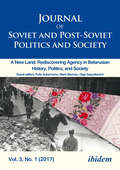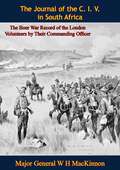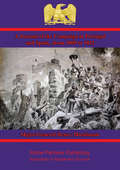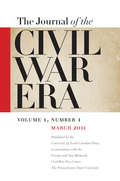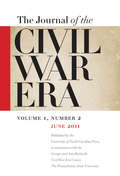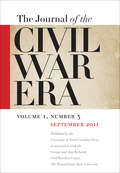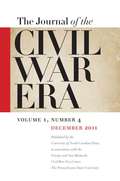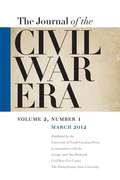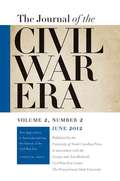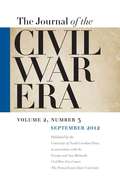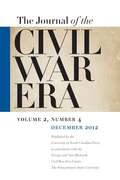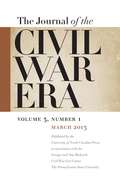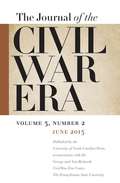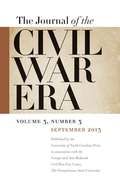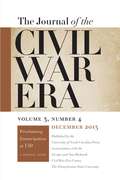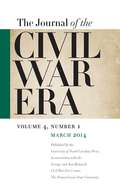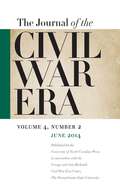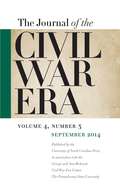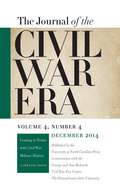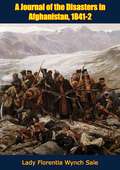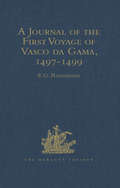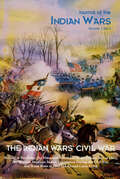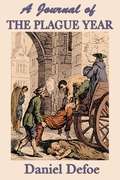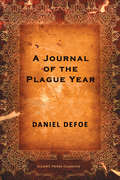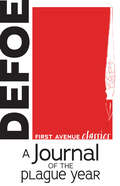- Table View
- List View
Journal of Soviet and Post-Soviet Politics and Society: A New Land: Rediscovering Agency in Belarusian History, Politics, and Society, Vol. 3, No. 1 (2017)
by Assistant Public Joanne RaymondThis special issue provides a forum for discussion of what Belarusian Studies are today and which new approaches and questions are needed to revitalize the field in the regional and international academic arena. The major aim of the issue is to go beyond the narratives of dictatorship and authoritarianism as well as that of a never-ending story of failed Belarusian nationalism—interpretive schemes that are frequently used for understanding Belarus in scholarly literature in Western Europe and Northern America. Bringing together ongoing research based on original empirical material from Belarusian history, politics, and society, this issue combines a discussion of the concept of autonomy/agency with its applicability to trace how individual and collective actors who define themselves as Belarusian—or otherwise—have manifested their agendas in various practices in spite of and in reaction to state pressure. This issue offers new approaches for interpreting Belarusian society as a dynamically changing set of agencies. In doing so, it attempts to overcome a tradition of locating present Belarusian political and social dilemmas in its socialist past.
The Journal of the C. I. V. in South Africa: The Boer War Record of the London Volunteers by Their Commanding Officer
by Major General W H MacKinnon“London men at war against the BoersThe turn of the 19th century to 20th was a time of popularity for the military volunteer movement in the British Empire. When the Anglo-Boer War broke out the City Imperial Volunteers quickly filled its ranks with the men of the City of London anxious to serve their country in South Africa. The venture was supported by the Lord Mayor and the popularity of London's effort had widespread appeal. All manner of men hurried to join the C. I. V's ranks and many of them were professionals from the city's law firms and financial institutions, artists, writers or gentlemen of private means. The author of The Riddle of the Sands, Erskine Childers was one of their number. This book is comprised of the journal entries of the officer commanding the regiment and it follows the C. I. V's wartime experiences from recruitment to its return home. The C. I. V was well regarded on campaign and earned the praise of peers and senior officers alike. This book delivers its information in the sober manner one might expect of its author in the circumstances, but is nevertheless essential source material about each part of the unit-the infantry, mounted infantry, cyclists, medical staff etc. Included as an appendix is a substantial honour role that will be of special interest to genealogists.”-Print ed.
A Journal of the Campaign in Portugal and Spain
by Major-General Henry MackinnonThis ebook is purpose built and is proof-read and re-type set from the original to provide an outstanding experience of reflowing text for an ebook reader. The body of Major-General Mackinnon now lies in St. Paul's Cathedral in London, next to his brother officer Major-General Robert Craufurd, both casualties of the assault on Cuidad Rodrigo during the Peninsular War. Mackinnon left behind his private journal filled with the details of the scenery, manners, customs and people of both Spain and Portugal as he found them during the Peninsular War, right up until his death. The journal was only intended for perusal by his closest family, but bears closer examination by those interested in the Peninsular War. Title - A Journal of the Campaign in Portugal and Spain Sub-Title - Containing Remarks on the Inhabitants, Customs, Trade and Cultivation, of those Countries, From the Year 1809 to 1812. Author -- Major-General Henry Mackinnon (????-1812) Text taken, whole and complete, from the edition published in 1907, London, by Longmans and Green. Original - iii and 102 pages.
The Journal of the Civil War Era, Volume 1, #1 (Spring #2011)
by William A. BlairThe University of North Carolina Press and the George and Ann Richards Civil War Era Center at the Pennsylvania State University are pleased to announce the launch of The Journal of the Civil War Era. William Blair, of the Pennsylvania State University, serves as founding editor.<P><P> The journal takes advantage of the flowering of research on the many issues raised by the sectional crisis, war, Reconstruction, and memory of the conflict, while bringing fresh understanding to the struggles that defined the period, and by extension, the course of American history in the nineteenth century.<P> The Journal of the Civil War Era aims to create a space where scholars across the many subfields that animate nineteenth-century history can enter into conversation with each other.<P> Table of Contents for this issue, Volume One, Number One:<P><P> Editor's Note<P> William Blair<P> Welcome to the New Journal<P><P> Articles<P><P> Edward L. Ayers and Scott Nesbit<P> Seeing Emancipation: Scale and Freedom in the American South<P><P> Melinda Lawson<P> Imagining Slavery: Representations of the Peculiar Institution on the Northern Stage, 1776-1860<P><P> LeeAnn Whites<P> Forty Shirts and a Wagonload of Wheat: Women, the Domestic Supply Line, and the Civil War on the Western Border<P><P> Review Essay<P> Douglas R. Egerton<P> Rethinking Atlantic Historiography in a Post-Colonial Era: The Civil War in a Global Perspective<P><P> Book Reviews<P> Books Received<P> Professional Notes<P> Aaron Sheehan-Dean<P> The Nineteenth-Century U.S. History Job Market, 2000-2009
The Journal of the Civil War Era, Volume 1, #2, (Summer #2011)
by William A. BlairThe University Of North Carolina Press And The George And Ann Richards Civil War Era Center At The Pennsylvania State University Are Pleased To Publish The Journal Of The Civil War Era. William Blair, Of The Pennsylvania State University, Serves As Founding Editor.<P><P> Table Of Contents For This Issue, Volume One, Number Two:<P> Volume 1, Number 2 June 2011<P> Table Of Contents<P> Articles<P><P> A. Kristen Foster<P> "We Are Men!": Frederick Douglass And The Fault Lines Of Gendered Citizenship<P><P> Kathryn S. Meier<P> "No Place For The Sick": Nature's War On Civil War Soldier: Mental And Physical Health In The 1862 Peninsula And Shenandoah Valley Campaigns<P><P> Brandi C. Brimmer<P> "Her Claim For Pension Is Lawful And Just": Representing Black Union Widows In Late-Nineteenth Century North Carolina<P><P> Review Essay<P> Frank Towers<P> Partisans, New History, And Modernization: The Historiography Of The Civil War's Causes, 1861-2011<P><P> Book Reviews<P> Books Received<P> Professional Notes<P> Daniel E. Sutherland<P> The Seven O'Clock Lecture<P><P> Notes On Contributors<P> The Journal Of The Civil War Era Takes Advantage Of The Flowering Of Research On The Many Issues Raised By The Sectional Crisis, War, Reconstruction, And Memory Of The Conflict, While Bringing Fresh Understanding To The Struggles That Defined The Period, And By Extension, The Course Of American History In The Nineteenth Century.
The Journal of the Civil War Era. Volume 1, #3 (Fall #2011)
by William A. BlairThe University Of North Carolina Press And The George And Ann Richards Civil War Era Center At The Pennsylvania State University Are Pleased To Publish The Journal Of The Civil War Era. William Blair, Of The Pennsylvania State University, Serves As Founding Editor.<P><P> Table Of Contents For This Issue:<P> Volume 1, Number 3: September 2011<P> Articles<P><P> Jon Grinspan<P> "Sorrowfully Amusing": The Popular Comedy Of The Civil War<P><P> Joan E. Cashin<P> Trophies Of War: Material Culture In The Civil War Era<P><P> Anne E. Marshall<P> The 1906 Uncle Tom's Cabin Law And The Politics Of Race And Memory In Early-Twentieth-Century Kentucky<P><P> Review Essay<P> Wayne Wei-Siang Hsieh<P> Total War And The American Civil War Reconsidered: The End Of An Outdated "Master Narrative" <P><P> Book Reviews<P> Books Received<P> Professional Notes<P> Barbara Franco<P> Planned Commemorations: Unexpected Consequences<P><P> Notes On Contributors<P> The Journal Of The Civil War Era Takes Advantage Of The Flowering Of Research On The Many Issues Raised By The Sectional Crisis, War, Reconstruction, And Memory Of The Conflict, While Bringing Fresh Understanding To The Struggles That Defined The Period, And By Extension, The Course Of American History In The Nineteenth Century.
Journal of the Civil War Era. Volume 1, #4 (Winter #2011)
by William A. BlairThe University Of North Carolina Press And The George And Ann Richards Civil War Era Center At The Pennsylvania State University Are Pleased To Publish The Journal Of The Civil War Era. William Blair, Of The Pennsylvania State University, Serves As Founding Editor.<P><P> Table Of Contents For This Issue:<P> Volume 1, Number 4: December 2011<P> Articles<P> Rachel A. Shelden<P> Messmates' Union: Friendship, Politics, And Living Arrangements In The Capital City, 1845–1861<P><P> Bruce Levine<P> "The Vital Element Of The Republican Party": Antislavery, Nativism, And Abraham Lincoln<P><P> James L. Huston<P> The Illinois Political Realignment Of 1844–1860: Revisiting The Analysis<P><P> Review Essay<P> Lyde Cullen Sizer<P> Mapping The Spaces Of Women's Civil War History<P> Book Reviews<P> Books Received<P> Professional Notes<P> Brian Kelly & John W. White<P> The After Slavery Website: A New Online Resource For Teaching U.S. Slave Emancipation<P><P> Notes On Contributors<P> The Journal Of The Civil War Era Takes Advantage Of The Flowering Of Research On The Many Issues Raised By The Sectional Crisis, War, Reconstruction, And Memory Of The Conflict, While Bringing Fresh Understanding To The Struggles That Defined The Period, And By Extension, The Course Of American History In The Nineteenth Century.
Journal of the Civil War Era, Volume 2, #1 (Spring #2012)
by William A. BlairThe Journal of the Civil War Era<P><P> Volume 2, Number 1<P> March 2012<P><P> TABLE OF CONTENTS<P><P> Forum<P><P> The Future of Civil War Era Studies<P> Stephen Berry, Michael T. Bernath, Seth Rockman, Barton A. Myers, Anne Marshall, Lisa M. Brady, Judith Giesberg, & Jim Downs<P> Articles<P> Jacqueline G. Campbell<P> "The Unmeaning Twaddle about Order 28″: Ben Butler and Confederate Women in Occupied New Orleans<P><P> David C. Williard<P> Executions, Justice, and Reconciliation in North Carolina's Western Piedmont, 1865-67<P><P> Matthew C. Hulbert<P> Constructing Guerrilla Memory: John Newman Edwards and Missouri's Irregular Lost Cause<P><P> Book Reviews<P> Books Received<P> Professional Notes<P> Kathi Kern & Linda Levstik<P> Teaching the New Departure: the United States vs. Susan B. Anthony<P><P> Notes on Contributors<P> The Journal of the Civil War Era takes advantage of the flowering of research on the many issues raised by the sectional crisis, war, Reconstruction, and memory of the conflict, while bringing fresh understanding to the struggles that defined the period, and by extension, the course of American history in the nineteenth century.
Journal of the Civil War Era, Volume 2, #2 (Summer #2012)
by William A. BlairThe Journal of the Civil War Era<P> Volume 2, Number 2<P> June 2012<P><P> TABLE OF CONTENTS<P><P> New Approaches to Internationalizing the History of the Civil War Era: A Special Issue<P><P> Editor's Note William Blair<P> Articles<P><P> W. Caleb Mcdaniel & Bethany L. Johnson<P> New Approaches to Internationalizing the History of the Civil War: An Introduction<P><P> Gale L. Kenny<P> Manliness and Manifest Racial Destiny: Jamaica and African American Emigration in the 1850s<P><P> Edward B. Rugemer<P> Slave Rebels and Abolitionists: The Black Atlantic and the Coming of the Civil War<P><P> Peter Kolchin<P> Comparative Perspectives on Emancipation in the U.S. South: Reconstruction, Radicalism, and Russia<P><P> Susan-Mary Grant<P> The Lost Boys: Citizen-Soldiers, Disabled Veterans, and Confederate Nationalism in the Age of People's War<P><P> Book Reviews<P> Books Received<P> Professional Notes<P><P> Mark W. Geiger<P> "Follow the Money"<P><P> Notes on Contributors<P><P> The Journal of the Civil War Era takes advantage of the flowering of research on the many issues raised by the sectional crisis, war, Reconstruction, and memory of the conflict, while bringing fresh understanding to the struggles that defined the period, and by extension, the course of American history in the nineteenth century.
Journal of the Civil War Era, Volume 2, #3 (Fall #2012)
by William A. BlairThe Journal of the Civil War Era<P> Volume 2, Number 3<P> September 2012<P> TABLE OF CONTENTS<P> Articles<P><P> Robert Fortenbaugh Memorial Lecture<P> Joan Waugh<P> "I Only Knew What Was in My Mind": Ulysses S. Grant and the Meaning of Appomattox<P><P> Patrick Kelly<P> The North American Crisis of the 1860s<P><P> Carole Emberton<P> "Only Murder Makes Men": Reconsidering the Black Military Experience<P><P> Caroline E. Janney<P> "I Yield to No Man an Iota of My Convictions": Chickamauga and Chattanooga National Military Park and the Limits of Reconciliation<P><P> Book Reviews<P> Books Received<P> Review Essay<P> David S. Reynolds<P> Reading the Sesquicentennial: New Directions in the Popular History of the Civil War<P><P> Notes on Contributors<P> The Journal of the Civil War Era takes advantage of the flowering of research on the many issues raised by the sectional crisis, war, Reconstruction, and memory of the conflict, while bringing fresh understanding to the struggles that defined the period, and by extension, the course of American history in the nineteenth century.
Journal of the Civil War Era, Volume 2, #4 (Winter #2012)
by William A. BlairThe Journal of the Civil War Era<P><P> Volume 2, Number 4<P> December 2012<P> TABLE OF CONTENTS<P> Articles<P><P> Mark Fleszar<P> "My Laborers in Haiti are not Slaves": Proslavery Fictions and a Black Colonization Experiment on the Northern Coast, 1835-1846 <P><P> Jarret Ruminski<P> "Tradyville": The Contraband Trade and the Problem of Loyalty in Civil War Mississippi<P><P> K. Stephen Prince<P> Legitimacy and Interventionism: Northern Republicans, the "Terrible Carpetbagger," and the Retreat from Reconstruction<P><P> Review Essay<P> Roseanne Currarino<P> Toward a History of Cultural Economy<P> Professional Notes<P> T. Lloyd Benson<P> Geohistory: Democratizing the Landscape of Battle<P><P> Book Reviews<P> Books Received<P> Notes on Contributors<P> The Journal of the Civil War Era takes advantage of the flowering of research on the many issues raised by the sectional crisis, war, Reconstruction, and memory of the conflict, while bringing fresh understanding to the struggles that defined the period, and by extension, the course of American history in the nineteenth century.
Journal of the Civil War Era, Volume 3, #1 (Spring #2013)
by William A. BlairThe Journal of the Civil War Era<P> Volume 3, Number 1<P> March 2013<P> TABLE OF CONTENTS<P> Editor's Note William Blair<P> Articles<P> Amber D. Moulton<P> Closing the "Floodgate of Impurity": Moral Reform, Antislavery, and Interracial Marriage in Antebellum Massachusetts<P><P> Marc-William Palen<P> The Civil War's Forgotten Transatlantic Tariff Debate and the Confederacy's Free Trade Diplomacy<P><P> Joy M. Giguere<P> "The Americanized Sphinx": Civil War Commemoration, Jacob Bigelow, and the Sphinx at Mount Auburn Cemetery<P><P> Review Essay<P> Enrico Dal Lago<P> Lincoln, Cavour, and National Unification: American Republicanism and Italian Liberal Nationalism in Comparative Perspective<P><P> Professional Notes<P> James J. Broomall<P> The Interpretation Is A-Changin': Memory, Museums, and Public History in Central Virginia<P><P> Book Reviews<P> Books Received<P> Notes on Contributors<P> The Journal of the Civil War Era takes advantage of the flowering of research on the many issues raised by the sectional crisis, war, Reconstruction, and memory of the conflict, while bringing fresh understanding to the struggles that defined the period, and by extension, the course of American history in the nineteenth century.
Journal of the Civil War Era, Volume 3, #2 (Summer #2013)
by William A. BlairThe Journal of the Civil War Era<P> Volume 3, Number 2<P> June 2013<P> TABLE OF CONTENTS <P> Editor's Note <P> William Blair<P> Articles<P><P> Stephen Cushman<P> When Lincoln Met Emerson<P><P> Christopher Phillips<P> Lincoln's Grasp of War: Hard War and the Politics of Neutrality and Slavery in the Western Border Slave States, 1861–1862<P><P> Jonathan W. White<P> The Strangely Insignificant Role of the U.S. Supreme Court in the Civil War<P><P> Review Essay<P> Yael Sternhell<P> Revisionism Reinvented? The Antiwar Turn in Civil War Scholarship<P><P> Professional Notes<P> Gary W. Gallagher<P> The Civil War at the Sesquicentennial: How Well Do Americans Understand Their Great National Crisis?<P><P> Book Reviews<P> Books Received<P> Notes on Contributors <P> The Journal of the Civil War Era takes advantage of the flowering of research on the many issues raised by the sectional crisis, war, Reconstruction, and memory of the conflict, while bringing fresh understanding to the struggles that defined the period, and by extension, the course of American history in the nineteenth century.
Journal of the Civil War Era, Volume 3, #3 (Fall #2013)
by William A. BlairThe Journal of the Civil War Era <P> Volume 3, Number 3 <P> September 2013 <P> TABLE OF CONTENTS <P> Articles <P><P> Robert Fortenbaugh Memorial Lecture <P> Steven Hahn <P> Slave Emancipation, Indian Peoples, and the Projects of a New American Nation-State <P><P> Beth Schweiger <P> The Literate South: Reading before Emancipation <P><P> Brian Luskey <P> Special Marts: Intelligence Offices, Labor Commodification, and Emancipation in Nineteenth-Century America <P><P> Review Essay <P> Nicole Etcheson <P> Microhistory and Movement: African American Mobility in the Nineteenth Century <P><P> Book Reviews <P>Books Received <P><P> Professional Notes <P> Megan Kate Nelson <P> Looking at Landscapes of War <P><P> Notes on Contributors <P><P> The Journal of the Civil War Era# takes advantage of the flowering of research on the many issues raised by the sectional crisis, war, Reconstruction, and memory of the conflict, while bringing fresh understanding to the struggles that defined the period, and by extension, the course of American history in the nineteenth century.
Journal of the Civil War Era, Volume 3, #4 (Winter #2013)
by William A. BlairThe Journal of the Civil War Era<P> Volume 3, Number 4<P> December 2013<P> TABLE OF CONTENTS<P><P> SPECIAL ISSUE: PROCLAIMING EMANCIPATION AT 150<P><P> Articles<P><P> Introduction<P> Martha S. Jones, Guest Editor<P> History and Commemoration: The Emancipation Proclamation at 150<P><P> James Oakes<P> Reluctant to Emancipate? Another Look at the First Confiscation Act<P><P> Stephen Sawyer & William J. Novak<P> Emancipation and the Creation of Modern Liberal States in America and France<P><P> Thavolia Glymph<P> Rose's War and the Gendered Politics of a Slave Insurgency in the Civil War<P><P> Martha Jones<P> Emancipation Encounters: The Meaning of Freedom from the Pages of Civil War Sketchbooks<P><P> Book Reviews<P> Books Received<P> Notes on Contributors
Journal of the Civil War Era, Volume 4, #1 (Spring #2014)
by William A. BlairThe Journal of the Civil War Era<P> Volume 4, Number 1<P> March 2014<P> TABLE OF CONTENTS<P> Articles<P><P> Nicholas Marshall<P> The Great Exaggeration: Death and the Civil War<P><P> Sarah Bischoff Paulus<P> America's Long Eulogy for Compromise: Henry Clay and American Politics, 1854-58<P> Ted Maris-Wolf<P> "Of Blood and Treasure": Recaptive Africans and the Politics of Slave Trade Suppression<P><P> Review Essay<P> W. Caleb McDaniel<P> The Bonds and Boundaries of Antislavery<P><P> Book Reviews<P> Books Received<P> Professional Notes<P> Craig A. Warren<P> Lincoln's Body: The President in Popular Films of the Sesquicentennial<P><P> Notes on Contributors
Journal of the Civil War Era, Volume 4, #2 (Summer #2014)
by William A. BlairThe Journal of the Civil War Era<P> Volume 4, Number 2<P> June 2014<P><P> TABLE OF CONTENTS<P><P> Tom Watson Brown Book Award<P> John Fabian Witt<P> Civil War Historians and the Laws of War<P><P> Articles<P><P> Chandra Manning<P> Working for Citizenship in Civil War Contraband Camps<P><P> Michael F. Conlin<P> The Dangerous Isms and the Fanatical Ists: Antebellum Conservatives in the South and the North Confront the Modernity Conspiracy<P><P> Nicholas Guyatt<P> "An Impossible Idea?" The Curious Career of Internal Colonization<P><P> Review Essay<P> John Craig Hammond<P> Slavery, Sovereignty, and Empires: North American Borderlands and the American Civil War, 1660-1860<P><P> Book Reviews<P> Books Received<P> Professional Notes<P><P> Jill Ogline Titus<P> An Unfinished Struggle: Sesquicentennial Interpretations of Slavery and Emancipation<P><P>
Journal of the Civil War Era, Volume 4, #3 (Fall #2014)
by William A. BlairThe Journal of the Civil War Era<P> Volume 4, Number 3, September 2014<P> TABLE OF CONTENTS<P> Editor's Note, William Blair<P><P> Articles<P><P> Felicity Turner<P> Rights and the Ambiguities of Law: Infanticide in the Nineteenth-Century U.S. South<P><P> Paul Quigley<P> Civil War Conscription and the International Boundaries of Citizenship<P><P> Jay Sexton<P> William H. Seward in the World<P><P> Review Essay<P> Patick J. Kelly<P> the European Revolutions of 1848 and the Transnational turn in Civil War History <P><P> Book Reviews<P> Books Received<P> Notes on Contributors
Journal of the Civil War Era, Volume 4, #4 (Winter #2014)
by William A. BlairThe Journal of the Civil War Era<P> Volume 4, Number 4 -- Coming to Terms with Civil War Military History: A Special Issue<P> December 2014<P><P> TABLE OF CONTENTS<P><P> Articles<P><P> Gary Gallagher & Kathryn Shively Meier<P> Coming to Terms with Civil War Military History<P><P> Peter C. Luebke<P> "Equal to Any Minstrel Concert I Ever Attended at Home": Union Soldiers and Blackface Performance in the Civil War South<P><P> John J. Hennessy<P> Evangelizing for Union, 1863: The Army of the Potomac, Its Enemies at Home, and a New Solidarity<P><P> Andrew F. Lang<P> Republicanism, Race, and Reconstruction: The Ethos of Military Occupation in Civil War America<P><P> Professional Notes<P><P> Kevin M. Levin<P> Black Confederates Out of the Attic and Into the Mainstream<P><P> Book Reviews<P> Books Received<P> Notes on Contributors<P>
A Journal of the Disasters in Afghanistan, 1841-2
by Lady Florentia Wynch SaleDuring the First Anglo-Afghan War, Lady Florentia Sale, wife of a British army officer, Sir Robert Henry Sale, was kidnapped in 1842, along with other women and children, as well as soldiers, and detained for nine months. The group were taken hostage by Akbar Khan, following the massacre in the Khurd Karbul Pass. Amongst the hostages with Lady Sale was her youngest daughter Alexandrina, Alexandrina’s husband Lt. John Sturt, and their newborn daughter. Sturt was fatally injured by three dagger wounds to the abdomen, with Lady Sale nursed her son-in-law in his final hours. She bribed the Afghan officers into releasing them, and they were rescued by Sir Richmond Shakespear on 17 September 1842. Her courageous and defiant actions meant that she endangered herself frequently; she was shot in the wrist, with the bullet lodging there.Throughout her time as a captive, Lady Sale kept a diary, detailing the events of the ordeal. A year later, Lady Sale published her journal as A Journal of the Disasters in Afghanistan, 1841-2, which documented her experiences throughout the Afghan War, and the book received critical acclaim.An action-filled story of folly, indecision, treachery and tragedy, all the while testifying to great courage and fortitude.
A Journal of the First Voyage of Vasco da Gama, 1497-1499 (Hakluyt Society, First Series #99)
by E. G. RavensteinTranslated and Edited, with Notes, an Introduction and Appendices. Includes also letters of King Manuel and Girolamo Sernigi, 1499, and early seventeenth-century Portuguese accounts of da Gama's first voyage. This is a new print-on-demand hardback edition of the volume first published in 1898. Owing to technical constraints it has not been possible to reproduce the following maps which appeared in the first edition: 'Natal to Malinde', 'The West Coast of India', 'Africa, from the Cantino Chart', 'Africa and India, from Canerio's Chart', and 'The Indian Ocean, according to the "Mohit"'.
Journal of the Indian Wars: The Indian Wars' Civil War
by Michael HughesJournal of the Indian Wars, or JIW was a quarterly publication on the study of the American Indian Wars. Before JIW, no periodical dedicated exclusively to this fascinating topic was available. JIW's focus was on warfare in the United States, Canada, and the Spanish borderlands from 1492 to 1890. Published articles also include personalities, policy, and military technologies. JIW was designed to satisfy both professional and lay readers with original articles of lasting value and a variety of columns of interest, plus book reviews, all enhanced with maps and illustrations. JIW's lengthy essays of substance are presented in a fresh and entertaining manner. Most readers of the Civil War and Indian War history know that a small force of Indians participated in the Battle of Pea Ridge; John Pope was banished to Minnesota after his disastorous performance at Second Bull Run to face the rebellious Sioux; Stand Watie and Ely Parker rose to high rank in the Confederate and Union armies, respectively; and a region labeled simply "Indian Territory" existed somewhere in the Trans-Mississippi Theater. All true. Yet the situation of American Indians during the Civil War period was much more complex, their fate more devastating and far-reaching than most students appreciate. Each of the articles in this issue underscore this point. In this edition: Foreword Firm but Fair: The Minnesota Volunteers and the Coming of the Dakota War of 1862 The Most Terrible Stories: The 1862 Dakota Conflict in White Imagination Chiefs by Commission: Stand Watie and Ely Parker Flowing with Blood and Whiskey: Stand Watie and the Battles of First and Second Cabin Creek Nations Asunder: Western American Indian Experiences During the Civil War, 1861-1865, Part I Interview: A Conversation with Battlefield Interpreter Doug Keller Features: Wisconsin's 1832 Black Hawk Trail The Indian Wars: Organizational, Tribal, and Museum News Thomas Online: Daughters of the Lance: Native American Women Warriors Book Reviews Index
A Journal of the Plague Year
by Daniel DefoeClassic 1722 account of the epidemic that ravaged England nearly 60 years earlier. Defoe used his considerable talents as a journalist and novelist to reconstruct -- historically and fictionally -- the Great Plague of London in 1664-65. Written as an eyewitness report, the novel abounds in memorable and realistic details.
A Journal of the Plague Year
by Daniel DefoeA London narrator recounts both the personal and the political happenings of a single year during the Great Plague in the seventeenth century.
A Journal of the Plague Year (First Avenue Classics ™)
by Daniel DefoeFirst published in 1722, this unabridged edition of Daniel Defoe's A Journal of the Plague Year covers events in London, England, in 1665 as the bubonic plague spread throughout the city. Though a work of historical fiction, the book includes accurate historical details, charts, statistics, and government documents. Defoe's narrator follows the spread of the plague and relates how powerful families and government officials tried to hide the disease to avoid inconvenience and public panic. But as deaths mounted and fear spread, those who could began to flee the city. A Journal of the Plague Year continues to resonate with modern audiences through its parallels to issues caused by modern diseases and the COVID-19 pandemic.
